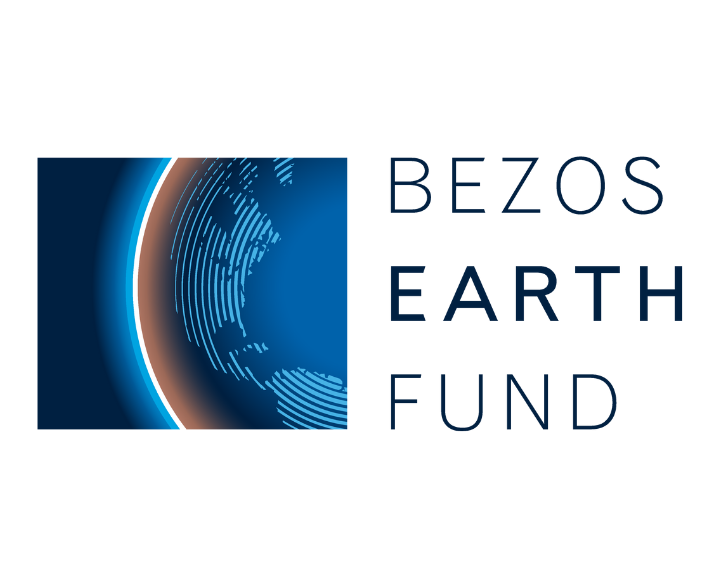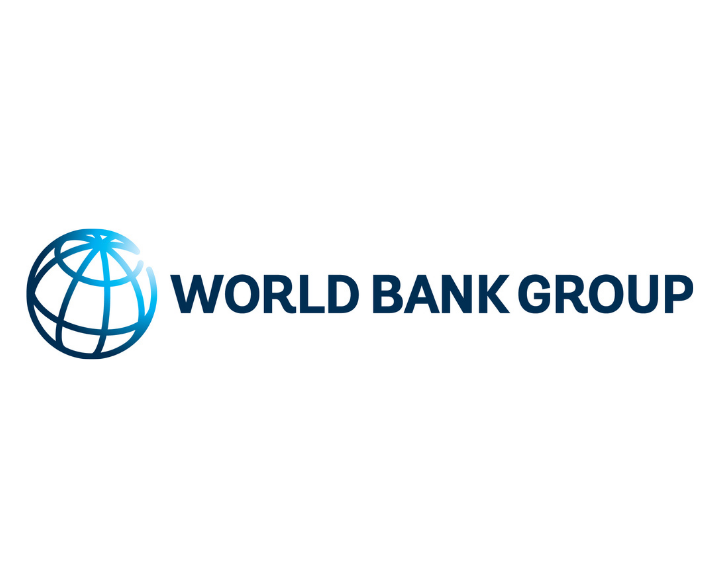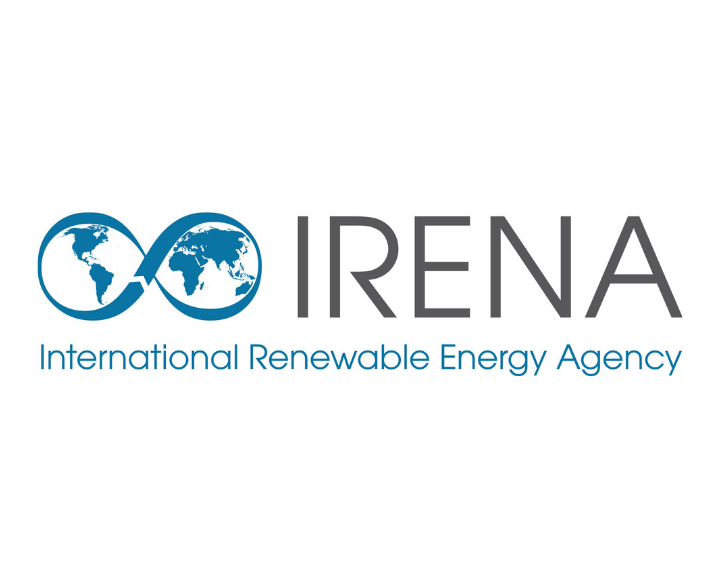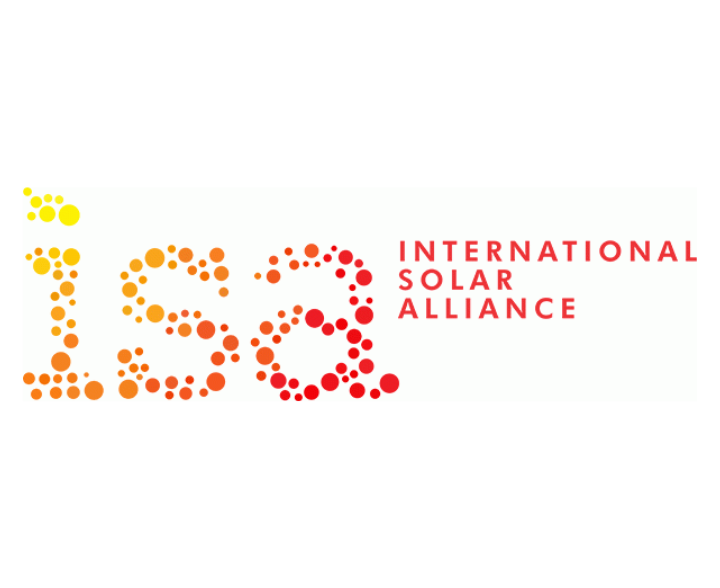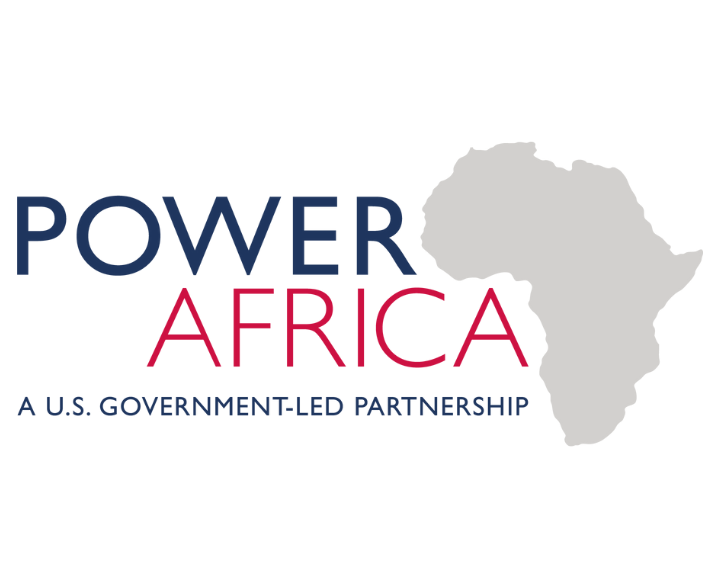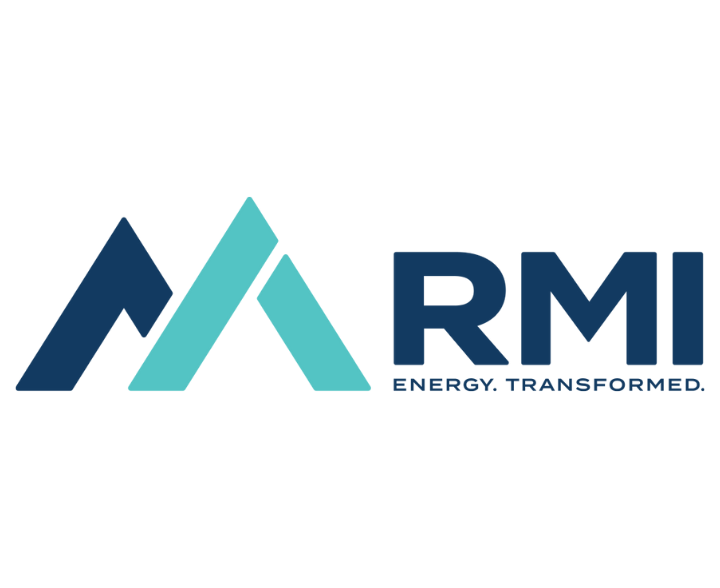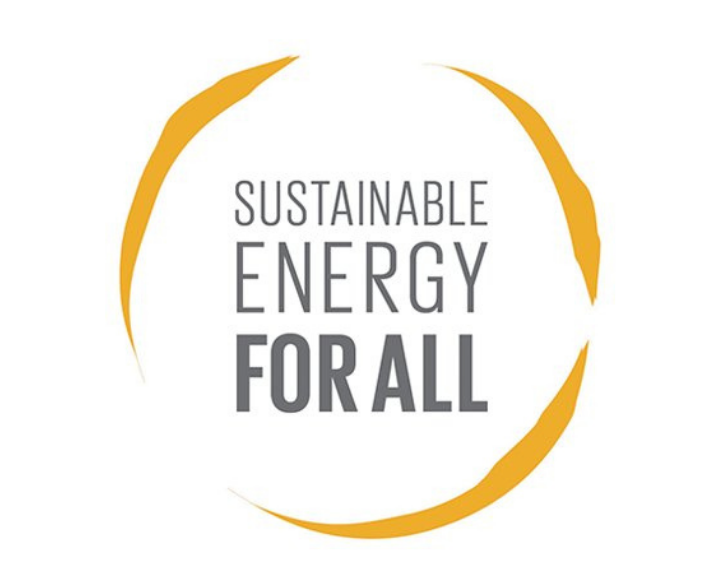The Alliance
The Global Energy Alliance for People and Planet (GEAPP) was launched at COP26 in November 2021 to address the challenge of combating energy poverty while ensuring a just energy transition. The Alliance recognizes that to create major change, a new approach is needed. Multiple players – governments, investors, innovators, power companies, philanthropies, and more – must come together to ensure access to electricity for all people, via low-carbon technologies, and with the economic wellbeing of communities taken into account. We must act quickly, before catastrophic climate change becomes irreversible.
Why Now
Two things are now true: Growing carbon emissions threaten a climate catastrophe, while a lack of access to reliable, affordable, abundant electricity limits and diminishes the lives of billions of people. These same low-income communities are also the most vulnerable to and least equipped to deal with climate change.
We cannot expect energy-poor countries to forgo economic development as part of a global campaign to confront climate change. Instead, we must help these countries develop their economies with technologies that do not accelerate climate change.
Solar mini-grid technician in Les Anglais, Haiti.
This is the Alliance’s mission: to play a catalytic role in combating climate change by bringing clean energy to countries in need of reliable power. Energy access and a clean energy transition are two sides of the same coin – success hinges upon both being accomplished simultaneously.
Photo Credit: Power Africa/Justice Kalebe
Why Now
Two things are now true: Growing carbon emissions threaten a climate catastrophe, while a lack of access to reliable, affordable, abundant electricity limits and diminishes the lives of billions of people. These same low-income communities are also the most vulnerable to and least equipped to deal with climate change.
We cannot expect energy-poor countries to forgo economic development as part of a global campaign to confront climate change. Instead, we must help these countries develop their economies with technologies that do not accelerate climate change.
Solar mini-grid technician in Les Anglais, Haiti.
This is the Alliance’s mission: to play a catalytic role in combating climate change by bringing clean energy to countries in need of reliable power. Energy access and a clean energy transition are two sides of the same coin – success hinges upon both being accomplished simultaneously.
Photo Credit: Power Africa/Justice Kalebe
Who We Are
This battle against climate change and energy poverty cannot be won by individual countries, institutions, or programs. Collaboration, shared vision, and a reframing of old either/or choices are needed to disrupt the status quo.
The Alliance is a collaboration of philanthropies, governments, development banks, finance institutions, and other organizations with the expertise and resources needed to create transformational progress.
Who We Are
This battle against climate change and energy poverty cannot be won by individual countries, institutions, or programs. Collaboration, shared vision, and a reframing of old either/or choices are needed to disrupt the status quo.
The Alliance is a collaboration of philanthropies, governments, development banks, finance institutions, and other organizations with the expertise and resources needed to create transformational progress.
-
Anchor partners
GEAPP’s Anchor Partners provide the Alliance with risk-tolerant grant capital, set the strategic vision, and use their deep experience in philanthropy to help ensure consistent progress toward our goals.
-
Investment Partners
A group of global multilateral investment banks, development finance institutions, and regional development banks serve as GEAPP’s Investment Partners.
These financial institutions bring a wealth of development experience and global relationships, catalyzing progress and dramatically amplifying the amount of capital the Alliance can bring to bear.
- African Development Bank Group
- Asian Development Bank
- British International Investment
- European Investment Bank
- Inter-American Development Bank
- Inter-American Development Bank | Invest
- International Finance Corporation World Bank Group
- U.S. Agency International Development
- U.S. International Development Finance Corporation
- World Bank Group
-
Upstream Partners
These expert agencies bring technical capabilities and local expertise to the Alliance and share an ability to support governments and other stakeholders to develop and deliver programs.
With this combination of vision, funding, and technical and local expertise, the Alliance is well-positioned to drive transformational change in energy access, economic opportunity, and de-carbonization around the world.
What We Do
The Global Energy Alliance for People and Planet is a collective action platform that uses a radically collaborative approach, modeled on the successful and innovative global vaccine alliance, Gavi. The Alliance works in partnership with national governments across Africa, Asia, Latin America and the Caribbean, and other global partners, to bring together and align stakeholders that would otherwise remain fragmented.
Developing Clean Energy Solutions
GEAPP supports three primary project-types, which are the pillars of GEAPP’s transformational work. By combining projects across these pillars into country-specific portfolios, the Alliance develops systemic solutions, tailored to the needs of each country.
These clean energy technologies are deployed in isolation from existing electricity grids, often in remote, rural areas. Because they are typically not interconnected with a larger grid, they have different needs for energy storage, demand stimulation, operation and maintenance, and community education.
These clean energy projects build off and expand the capacity of existing electricity grids, helping to make their electricity more abundant, reliable, affordable, and of course, clean.
These projects seek to replace existing high-emissions electricity sources with new clean-energy solutions. These projects should also advance the economic wellbeing of local communities.
Driving Scale
In selecting projects to include within a country program, the Alliance seeks replicability and scalability. For each project, GEAPP systematically applies three levers to maximize the impact of invested resources.
The Alliance builds government capacity and improves market conditions for private sector solutions. This is accomplished by developing and coordinating beneficial policies at the country level, and by providing the financial support needed to access the right expertise and develop needed capacities.
GEAPP catalyzes new business models, applied technology, and innovative finance to unlock a new generation of clean-energy solutions. The Alliance encourages innovative and entrepreneurial approaches and provides pivotal support to replicate and scale solutions quickly.
The Alliance deploys at-risk capital to encourage private sector participation in just energy transitions. This includes de-risking project development to increase the pipeline of investable projects and taking “proof of concept” risk on innovative solutions.
Delivering Impact
Measurable impact is at the center of all Alliance activities. The Alliance has three key, quantified measures of success that guide project selection, design and deployment. These impact goals are also GEAPP’s public anchor for accountability.
The Alliance has set a goal of extending sustainable, abundant energy to 1 billion underserved people.
The Alliance supports this goal with a target of avoiding or averting the release of over 4 billion tons of greenhouse gases (CO2 equivalent).
Energy access and reduced emissions alone are not enough to ensure all people can experience lives of dignity. Thus, the Alliance has set a goal of enabling or improving 150 million sustainable livelihoods that generate inclusive economic growth.
Country Partnerships
The Alliance acknowledges a core injustice: developed countries have accounted for the majority of historical emissions, while today’s energy-poor countries are expected to forgo emissions-intensive energy for the sake of the planet. The Alliance positions itself on the side of developing nation governments, designing customized programs that help them meet the urgent needs of their citizens. The Alliance is a neutral party, with no commercial interests and no agenda except to deliver impact through trusting, collaborative, long-term relationships with partner governments.
GEAPP’s design, setup, and execution of projects are all led by teams at the local level with the greatest contextual knowledge. Each country program reflects on-the-ground expertise and consists of a portfolio of projects designed to catalyze systemic change and impact. This decentralized approach enables excellent responsiveness to local needs.
Since launching in 2021, the Alliance has partnered with governments and other stakeholders in South Africa, Nigeria, Democratic Republic of Congo, Ethiopia, Haiti, India, Indonesia, Sierra Leone, Malawi, Myanmar, Puerto Rico and Uganda and will form new partnerships in additional countries over the coming years.
Projects
The Alliance’s projects are designed to test new models, develop proofs-of-concept, strengthen project pipelines, or create the conditions for achieving scale. The core principle underpinning each Alliance-supported project is that it must have the potential to be catalytic.
What We Do
The Global Energy Alliance for People and Planet is a collective action platform that uses a radically collaborative approach, modeled on the successful and innovative global vaccine alliance, Gavi. The Alliance works in partnership with national governments across Africa, Asia, Latin America and the Caribbean, and other global partners, to bring together and align stakeholders that would otherwise remain fragmented.
Developing Clean Energy Solutions
GEAPP supports three primary project-types, which are the pillars of GEAPP’s transformational work. By combining projects across these pillars into country-specific portfolios, the Alliance develops systemic solutions, tailored to the needs of each country.
These clean energy technologies are deployed in isolation from existing electricity grids, often in remote, rural areas. Because they are typically not interconnected with a larger grid, they have different needs for energy storage, demand stimulation, operation and maintenance, and community education.
These clean energy projects build off and expand the capacity of existing electricity grids, helping to make their electricity more abundant, reliable, affordable, and of course, clean.
These projects seek to replace existing high-emissions electricity sources with new clean-energy solutions. These projects should also advance the economic wellbeing of local communities.
Driving Scale
In selecting projects to include within a country program, the Alliance seeks replicability and scalability. For each project, GEAPP systematically applies three levers to maximize the impact of invested resources.
The Alliance builds government capacity and improves market conditions for private sector solutions. This is accomplished by developing and coordinating beneficial policies at the country level, and by providing the financial support needed to access the right expertise and develop needed capacities.
GEAPP catalyzes new business models, applied technology, and innovative finance to unlock a new generation of clean-energy solutions. The Alliance encourages innovative and entrepreneurial approaches and provides pivotal support to replicate and scale solutions quickly.
The Alliance deploys at-risk capital to encourage private sector participation in just energy transitions. This includes de-risking project development to increase the pipeline of investable projects and taking “proof of concept” risk on innovative solutions.
Delivering Impact
Measurable impact is at the center of all Alliance activities. The Alliance has three key, quantified measures of success that guide project selection, design and deployment. These impact goals are also GEAPP’s public anchor for accountability.
The Alliance has set a goal of extending sustainable, abundant energy to 1 billion underserved people.
The Alliance supports this goal with a target of avoiding or averting the release of over 4 billion tons of greenhouse gases (CO2 equivalent).
Energy access and reduced emissions alone are not enough to ensure all people can experience lives of dignity. Thus, the Alliance has set a goal of enabling or improving 150 million sustainable livelihoods that generate inclusive economic growth.
Country Partnerships
The Alliance acknowledges a core injustice: developed countries have accounted for the majority of historical emissions, while today’s energy-poor countries are expected to forgo emissions-intensive energy for the sake of the planet. The Alliance positions itself on the side of developing nation governments, designing customized programs that help them meet the urgent needs of their citizens. The Alliance is a neutral party, with no commercial interests and no agenda except to deliver impact through trusting, collaborative, long-term relationships with partner governments.
GEAPP’s design, setup, and execution of projects are all led by teams at the local level with the greatest contextual knowledge. Each country program reflects on-the-ground expertise and consists of a portfolio of projects designed to catalyze systemic change and impact. This decentralized approach enables excellent responsiveness to local needs.
Since launching in 2021, the Alliance has partnered with governments and other stakeholders in South Africa, Nigeria, Democratic Republic of Congo, Ethiopia, Haiti, India, Indonesia, Sierra Leone, Malawi, Myanmar, Puerto Rico and Uganda and will form new partnerships in additional countries over the coming years.
Projects
The Alliance’s projects are designed to test new models, develop proofs-of-concept, strengthen project pipelines, or create the conditions for achieving scale. The core principle underpinning each Alliance-supported project is that it must have the potential to be catalytic.
The ultimate goal is to mobilize the appropriate resources to help supported sectors reach a tipping point. When these are reached, projects are mature enough to secure funding from financial markets. This enables countries to secure the capital needed to achieve scale and meet their transformative goals.
Solar mini-grids in Shimankar Village, Nigeria.
The ultimate goal is to mobilize the appropriate resources to help supported sectors reach a tipping point. When these are reached, projects are mature enough to secure funding from financial markets. This enables countries to secure the capital needed to achieve scale and meet their transformative goals.
Solar mini-grids in Shimankar Village, Nigeria.
Examples of supported projects and their expected impacts are referenced throughout this report, and can be found in their totality here.
Footnotes
- Source: IEA, “Global energy crisis shows urgency of accelerating investment in cheaper and cleaner energy in Africa”; available at: https://w/ww.iea.org/news/global-energy-crisis-shows-urgency-of-accelerating-investment-in-cheaper-and-cleaner-energy-in-africa
- Source: Tracking SDG7 – SDG 7.1.1 Electrification Dataset; available at: https://trackingsdg7.esmap.org/downloads
- Source: Tracking SDG7 – SDG 7.1.1 Electrification Dataset; available at: https://trackingsdg7.esmap.org/downloads
- Source: IEA, SDG7: Data and Projections; available at: https://www.iea.org/reports/sdg7-data-and-projections
- Source: Tracking SDG7 – SDG 7.1.1 Electrification Dataset; available at: https://trackingsdg7.esmap.org/downloads
- Source: SEforAll “Lasting Impact: Sustainable Off-Grid Solar Delivery Models to Power Health and Education” (2019), available at: https://www.seforall.org/publications/lasting-impact-sustainable-off-grid-solar-delivery-models
- Source: 60_decibels: Uses and Impacts of Solar Water Pumps; available at: https://storage.googleapis.com/e4a-website-assets/Use-and-Impacts-of-SWPs-July-2021-v2.pdf
- Source: Authors’ calculations assuming average-sized smartphone battery (4,000 mAh, 3.8V; 15 Wh) and average electricity rates in the US and Europe ($0.15- $0.30 per kWh) vs. typical charging service cost in developing contexts.
- Source: IFC, The Dirty Footprint of the Broken Grid, 2019; Available at: https://www.ifc.org/wps/wcm/connect/industry_ext_content/ifc_external_corporate_site/financial+institutions/resources/dirty-footprint-of-broken-grid
- Source: IFC, The Dirty Footprint of the Broken Grid, 2019; Available at: https://www.ifc.org/wps/wcm/connect/industry_ext_content/ifc_external_corporate_site/financial+institutions/resources/dirty-footprint-of-broken-grid
- Source: World Bank, Underutilized Potential: The Business Costs of Unreliable Infrastructure in Developing Countries, 2019; Available at: https://elibrary.worldbank.org/doi/10.1596/1813-9450-8899
- Source: World Bank Enterprise Surveys; available at: https://www.enterprisesurveys.org/en/enterprisesurveys
- Source: Authors’ calculations, leveraging Tracking SDG7 – SDG 7.1.1 Electrification Dataset, IEA per capita electricity consumption data
- Source: Energy for Growth Hub, The Modern Energy Minimum; Available at: https://www.energyforgrowth.org/wp-content/uploads/sites/5/2019/01/FULL-Modern-Energy-Minimum-final-Jan2021.pdf
- Source: Authors’ calculations, leveraging US EIA data for US historicals, IEA per capita electricity consumption data, and World Bank country designations.
- Source: IEA Data Browser, Available at: https://www.iea.org/data-and-statistics/data-tools/energy-statistics-data-browser
- Source: Authors’ calculations based on regression analysis of per capita GDP and electricity consumption data vs. HDI score
- Source: Authors’ calculations, leveraging IEA per capita electricity consumption data, IEA residential share of electricity consumption data, and UN DESA World Population Prospects 2022 medium variant projections (all publicly available).
- Source: IEA Data Browser, Available at: https://www.iea.org/data-and-statistics/data-tools/energy-statistics-data-browser
- Authors’ calculations based on IEA, Tracking Transport 2021, available at: https://www.iea.org/reports/transport
- Solar PV indirect emissions occur during the manufacturing, distribution, installation, and disposal of systems component
- Source: IRENA, Power Generation Costs, 2021; Available at: https://www.irena.org/publications/2022/Jul/Renewable-Power-Generation-Costs-in-2021
- Source: Bloomberg New Energy Finance, “Battery Pack Prices Fall to an Average of $132/kWh, But Rising Commodity Prices Start to Bite”, available at: https://about.bnef.com/blog/battery-pack-prices-fall-to-an-average-of-132-kwh-but-rising-commodity-prices-start-to-bite/
- Source: IEA, Annual energy storage additions by country, 2015-2020; available at: https://www.iea.org/data-and-statistics/charts/annual-energy-storage-additions-by-country-2015-2020
- Source: Author’s calculations leveraging NREL’s U.S. Solar Photovoltaic System and Energy Storage Cost Benchmarks: Q1 2021
- Source: Rockefeller Foundation, Electrifying Economies; Available at: https://www.rockefellerfoundation.org/rf-microsites/electrifying-economies/
- Source: SEIA, “Solar Industry Research Data”; available at: https://www.seia.org/solar-industry-research-data
- Source: Ember Data Explorer; available at: https://ember-climate.org/data/data-explorer/
- Source: Author modeling leveraging data from CAIT and assuming that OECD countries reach net zero by 2050, emerging economies by 2060, and energy-poor countries by 2070, with emissions growth reversed in the latter by 2040
- Source: Author modeling leveraging data from CAIT and assuming that emissions grow at a CAGR of 2.8 percent per year through 2050 and 1.4 percent in the following decade, only beginning to decrease starting in 2060.
- Source: Author’s calculations based on OPEC crude oil reserves of 267 billion barrels and and 0.3714 tCO2/barrel from ‘Carbon Majors: Accounting for Carbon and Methane Emissions 1854-2010 – Methods & Results Report’
GEAPP Program and Partner Project Highlights
- Source: Benchmarking Distribution Utilities in India, October 2020, SPI & Niti Aayog; Available at: https://smartpowerindia.org/wp-content/uploads/sites/5/2021/07/WEB_SPI_Electrification_16.pdf
- Source: Rooftop Solar final render; Available at: https://www.youtube.com/watch?v=4wwvbXpuWgs
- Source: Rooftop Solar final render; Available at: https://www.youtube.com/watch?v=4wwvbXpuWgs
- Source: SPI Customer Report; Available at: https://smartpowerindia.org/smart-power-india-launches-its-report-on-rural-electrification-in-india/
- Source: Health Effects of Diesel Exhaust; Available at: https://www.cancer.org/healthy/cancer-causes/chemicals/diesel-exhaust-and-cancer.html ; https://erj.ersjournals.com/content/17/4/733 ; https://oehha.ca.gov/air/health-effects-diesel-exhaust
- Source: SPI Deployment estimates
- Source: ESMAP, Nigeria Tracking SDG 7, available at: https://trackingsdg7.esmap.org/country/nigeria
- Authors’ calculation based on IEA 2019 data
- Source: FAO, Nigeria at a Glance, available at: https://www.fao.org/nigeria/fao-in-nigeria/nigeria-at-a-glance/en/
- Source: National Bureau of Statistics, available at: https://www.nigerianstat.gov.ng/
- Source: IFC, The Dirty Footprint of the Broken Grid, 2019; Available at: https://www.ifc.org/wps/wcm/connect/2cd3d83d-4f00-4d42-9bdc-4afdc2f5dbc7/20190919-Full-Report-The-Dirty-Footprint-of-the-Broken-Grid.pdf?MOD=AJPERES&CVID=mR9UpXC
- Source: IFC, The Dirty Footprint of the Broken Grid, 2019; Available at: https://www.ifc.org/wps/wcm/connect/2cd3d83d-4f00-4d42-9bdc-4afdc2f5dbc7/20190919-Full-Report-The-Dirty-Footprint-of-the-Broken-Grid.pdf?MOD=AJPERES&CVID=mR9UpXC
- Source: Nigeria Energy Transition Plan, available at: https://www.seforall.org/events/launch-of-nigerias-energy-transition-plan
- Source: International Energy Agency Energy Statistics Data Browser; Available at: https://www.iea.org/data-and-statistics/data-tools/energy-statistics-data-browser
- Source: International Energy Agency – South Africa; Available at: https://www.iea.org/countries/south-africa
- Source: South Africa Department of Energy Energy Balances 2018 (pg. 14); Available at: http://www.energy.gov.za/files/media/explained/2021-South-African-Energy-Sector-Report.pdf
- Source: GDP by Country; Available at: https://www.worldometers.info/gdp/gdp-by-country/
- Source: UNDP Climate Promise – South Africa; Available at: https://climatepromise.undp.org/what-we-do/where-we-work/south-africa
- Source: World Bank data; available at: https://data.worldbank.org/indicator/EG.ELC.ACCS.ZS?locations=MM. However, SPM estimates this number to be closer to 55%.
- Source: https://www.unfpa.org/data/world-population/MM
- Source: SPM: Energising Agriculture in Myanmar; available at: https://downloads.ctfassets.net/nvxmg7jt07o2/aw1dQBBaMLxivJ7jRLu4Z/716b0732a3e83bfa6c3bbe50a573f565/Final_SPM-agriculturalvaluechains-final_1.pdf
- Source: Fulcrum, “Myanmar’s Post-coup Electricity Woes: Stalled Power Plans, Shattered Public Trust”; available at: https://fulcrum.sg/myanmars-post-coup-electricity-woes-stalled-power-plans-shattered-public-trust/
- [1]Source: World Bank, Myanmar Rice and Pulses: Farm Production Economics and Value Chain Dynamics (2019); available at: https://documents1.worldbank.org/curated/en/623701579900727742/pdf/Myanmar-Rice-and-Pulses-Farm-Production-Economics-and-Value-Chain-Dynamics.pdf
- Source: Myint, T and Myo Thu, K – National Export Strategy (2019) Rubber Sector Strategy, 2015-2019; retrieved from https://ap.fftc.org.tw/article/2606
- Source: Myint, T and Myo Thu, K – National Export Strategy (2019) Rubber Sector Strategy, 2015-2019; retrieved from https://ap.fftc.org.tw/article/2606
- Source: Myint, T and Myo Thu, K – National Export Strategy (2019) Rubber Sector Strategy, 2015-2019; retrieved from https://ap.fftc.org.tw/article/2606
- Source: USAID: Rapid Market Assessment of Aquaculture Sector in Myanmar (2021); available from: https://pdf.usaid.gov/pdf_docs/PA00XCRW.pdf
- Source: World Data Population Comparison; Available at: https://www.worlddata.info/populationgrowth.php
- Source: GEAPP DREAM Initiative; Available at: https://www.energyalliance.org/news-insights/dream-initiative/
- Source: FAO Smallholder Farmer Data Portrait; Available at: https://www.fao.org/family-farming/detail/en/c/385074/
- Source: GIZ Solar Irrigation Market Analysis in Ethiopia, IWMI/FAO Suitability Framework for Solar Irrigation ; Available at: http://www.practica.org/wp-content/uploads/sites/5/2021/04/Solar-irrigation-market-Analysis-in-Ethiopia_GIZ-NIRAS-IP-Consult-PRACTICA.pdf
- Source: Catalyst calculations leveraging information from the Ethiopian Agricultural Transformation Agency Minigrid Viability Report.
- Source: Catalyst estimations leveraging World Bank Multi-tier Framework
- Source: Catalyst estimations leveraging GEAPP “Transforming a Billion Lives” Report; Available at: https://www.energyalliance.org/reports/
- Source: Catalyst estimations leveraging: CDM AMS-I.L. Electrification of rural communities using renewable energy — Version 3.0; Available at: https://cdm.unfccc.int/methodologies/DB/CCZKY3FSL1T28BNEGDRSCKS0CY0WVA, CDM AMS-I.F.Renewable electricity generation for captive use and mini-grid — Version 4.0; Available at: https://cdm.unfccc.int/methodologies/DB/VLTLVBDOD19GFSTDHAR0CRLUZ6YMGU, CDM AMS-I.B. Mechanical energy for the user with or without electrical energy — Version 12.0; Available at:https://cdm.unfccc.int/methodologies/DB/M204DLP0XMSWSZ9H4SIZ6W86M8RHCM and SE4ALL Emissions Tool; Available at: https://www.seforall.org/mini-grids-emissions-tool
- Source: NREL Island Energy Snapshot; Available at: https://www.nrel.gov/docs/fy15osti/62708.pdf
- Source: Energy Information Administration – Hawaii; Available at: https://www.eia.gov/state/?sid=HI
- [1]Source:Energy Information Administration – Electric Power Monthly; Available at: https://www.eia.gov/electricity/monthly/epm_table_grapher.php?t=epmt_5_6_a
- Source: The Socio-Economic Impacts of the Puerto Rico Electric Power Authority (PREPA) Restructuring Support Agreement (RSA) on the Population of Puerto Rico; Available at: https://ieefa.org/wp-content/uploads/sites/5/2019/12/PREPA-RSA-Cordero-Guzman-UTIER-REPORT-9-10-19-FIN-ENGLISH.pdf
- Source: The Socio-Economic Impacts of the Puerto Rico Electric Power Authority (PREPA) Restructuring Support Agreement (RSA) on the Population of Puerto Rico; Available at: https://ieefa.org/wp-content/uploads/sites/5/2019/12/PREPA-RSA-Cordero-Guzman-UTIER-REPORT-9-10-19-FIN-ENGLISH.pdf
- Source: Tracking SDG7 – SDG 7.1.1 Electrification Dataset; available at:https://trackingsdg7.esmap.org/downloads
- Source: The World Bank, “Nigeria – Food SmartCountry Diagnostic,” 2020.; Available at: https://openknowledge.worldbank.org/handle/10986/34522
- Source: PWC. Boosting rice production through increased mechanisation, (2018); available from: https://www.pwc.com/ng/en/publications/boosting-rice-production-through-increased-mechanisation.html
- Food and Agriculture Organization of the United Nations, World Food and Agriculture – Statistical Yearbook 2020. Rome, 2020. doi: 10.4060/cb1329en. ; Available at: https://www.fao.org/3/cb1329en/CB1329EN.pdf
- Source: Boosting rice production through increased mechanisation, (2018); available from: https://www.pwc.com/ng/en/publications/boosting-rice-production-through-increased-mechanisation.html
- Source: Tracking SDG7 – SDG 7.1.1 Electrification Dataset; available at:https://trackingsdg7.esmap.org/downloads
- Source: Prospects for Energy Efficiency in Sierra Leone’s Power Sector; Available at: https://www.energyeconomicgrowth.org/sites/default/files/2022-02/Lucas%20Davis%20working%20paper.pdf
- Source: Estimations based on GEAPP Jobs report multipliers and International Labour Organization Hydropower Jobs ; Available at: https://www.ilo.org/wcmsp5/groups/public/—ed_emp/documents/publication/wcms_562269.pdf
- Source: Catalyst calculations based on World Bank Multi-tier Framework
- Source: CDM AMS-I.L. Electrification of rural communities using renewable energy — Version 3.0; Available at: https://cdm.unfccc.int/methodologies/DB/CCZKY3FSL1T28BNEGDRSCKS0CY0WVA
- Source: CDM AMS-I.D. Grid connected renewable electricity generation — Version 18.0; Available at: https://cdm.unfccc.int/methodologies/DB/W3TINZ7KKWCK7L8WTXFQQOFQQH4SBK
- Source: Catalyst calculations based on Tracking SDG 7.
- Source: IADB Energia Hub; Available at: https://hubenergia.org/index.php/en/indicators/access-electricity-service
- Source: IADB Energia Hub; Available at: https://hubenergia.org/index.php/en/indicators/access-electricity-service
- Source: Tracking SDG 7 Report; Available at: https://trackingsdg7.esmap.org/country/malawi
- Source: IRENA Statistical Profiles – Malawi; Available at: https://www.irena.org/IRENADocuments/Statistical_Profiles/Africa/Malawi_Africa_RE_SP.pdf
- Source: Catalyst modeling based on expected improvements to power supply reliability for grid-tied customers served by the new BESS and VRE systems.
- Source: Catalyst modeling based on storage industry multipliers for direct BESS construction and general economy sector splits for Malawi applied to estimated employment multipliers from GEAPP’s 2021 Jobs Report.
- Source: Catalyst modeling based on displacement of stop-gap and backup power sources for households and businesses
- IEA Energy Statistics – Indonesia; Available at: https://www.iea.org/data-and-statistics/data-tools/energy-statistics-data-browser
